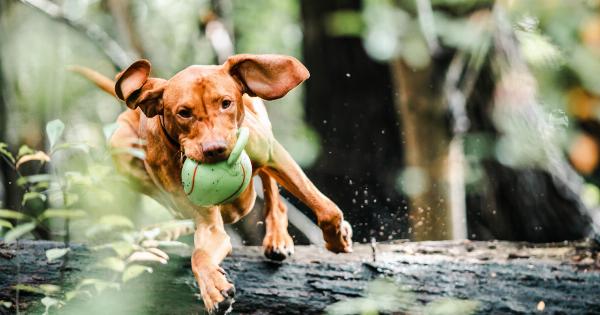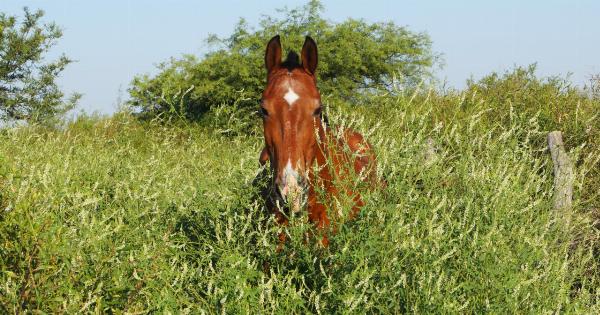A canine’s mustache, also known as vibrissae or whiskers, is often overlooked as a mere adornment on their face. However, these seemingly insignificant features pack a powerful punch when it comes to aiding their senses and communication.
In this article, we will delve into the secret powers of your canine’s mustache, exploring their purpose, how they work, and why they are crucial for your furry friend’s overall well-being.
What are Canine Whiskers?
Canine whiskers are long, thick, and stiff hairs that are significantly different from the regular fur on a dog’s body. These specialized hairs are typically found on the snout, above the eyes, and sometimes on the chin.
Contrary to popular belief, whiskers are not only present in cats but are also an essential part of a dog’s sensory system.
The Purpose and Function of Whiskers
Whiskers serve various purposes in a dog’s life. Their incredible sensitivity allows canines to gather essential information about their surroundings, enhancing their perception and aiding in their navigation.
Let’s explore the key functions of a dog’s mustache:.
1. Navigation and Spatial Awareness
Whiskers play a fundamental role in helping dogs navigate their environment effectively. They are incredibly sensitive to even the smallest of vibrations and air currents.
By brushing against objects or feeling changes in airflow, a dog can gauge their surroundings, helping them maneuver through narrow spaces, locate objects, and avoid potential obstacles.
2. Measurement of Objects
As a dog moves around, their whiskers brush against objects in their path. This contact provides vital information about the size and shape of objects, allowing them to assess their surroundings and make quick decisions.
This ability to measure the width of an opening or the space they have to squeeze through contributes to their exceptional agility.
3. Sensitivity to Movement
Canine whiskers are incredibly responsive to even the slightest movements in the environment. This heightened sensitivity aids dogs in detecting potential predators, prey, or objects in motion.
By detecting changes in the air, dogs can anticipate an approaching threat or spot a moving target, giving them an advantage in activities such as hunting or playing fetch.
4. Enhanced Facial Expression
Whiskers are not only practical but also serve a communicative purpose. Just as humans utilize facial expressions, dogs use their whiskers to display various emotions.
The position of their whiskers can indicate excitement, fear, aggression, or relaxation, providing vital visual cues to other dogs and humans.
5. Protective Reflexes
Whiskers are associated with a dog’s protective reflexes. If something touches a dog’s facial whiskers, such as an insect or a branch, they trigger a response to protect their eyes or face.
This reflexive action helps prevent potential eye injuries and keeps their face safe in unpredictable situations.
6. Communication
Through subtle movements of their whiskers, dogs can communicate with both humans and other animals.
For example, a dog who feels threatened may stiffen their whiskers to convey aggression, while relaxed and forward-facing whiskers indicate a friendly and non-threatening demeanor. Understanding these signals can greatly enhance our ability to interact with our canine companions.
Understanding Whisker Sensitivity
Whiskers are embedded deep within a dog’s skin and are surrounded by nerve endings. This high concentration of nerves makes them incredibly sensitive and helps canines gather precise information about their surroundings.
It’s important to note that cutting or excessively grooming whiskers can be distressing and disorienting for dogs. Removing their whiskers can temporarily impair their ability to navigate and communicate effectively, causing them unnecessary stress.
Caring for Your Canine’s Whiskers
As a responsible dog owner, it’s essential to be mindful of your furry friend’s whiskers. Here are a few tips to ensure their whiskers remain healthy:.
1. Avoid Trimming Whiskers
Resist the urge to trim or groom your dog’s whiskers. Let them grow naturally as it is their intrinsic way of gathering information and communicating. Trimming whiskers can disorient your dog and negatively impact their overall well-being.
2. Protect Whiskers from Damage
Be aware of your dog’s surroundings and ensure they are safe from potential hazards that can damage their whiskers. For example, avoid placing their food and water bowls in tight spaces that could cause their whiskers to bend or become stuck.
3. Regular Veterinary Check-ups
During your dog’s routine check-ups, ask your veterinarian to examine their whiskers as well. They can ensure their whiskers and the surrounding area are healthy and free from any infections or abnormalities.
Conclusion
While your canine companion’s mustache may have seemed insignificant before, you now understand the secret power it holds. A dog’s whiskers play a crucial role in their sensory perception, communication, and overall well-being.
By respecting and nurturing their whiskers, you can help your furry friend navigate the world around them effectively. Embrace, cherish, and protect their amazing mustache!.






























